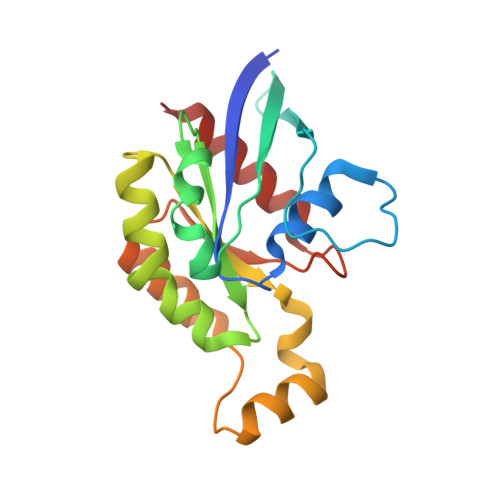Tumor-derived RHOA mutants interact with effectors in the GDP-bound state.
Lin, Y., Ramelot, T.A., Senyuz, S., Gursoy, A., Jang, H., Nussinov, R., Keskin, O., Zheng, Y.(2024) Nat Commun 15: 7176-7176
- PubMed: 39169042
- DOI: https://doi.org/10.1038/s41467-024-51445-z
- Primary Citation of Related Structures:
8FPW, 8FPX - PubMed Abstract:
RHOA mutations are found at diverse residues in various cancer types, implying mutation- and cell-specific mechanisms of tumorigenesis. Here, we focus on the underlying mechanisms of two gain-of-function RHOA mutations, A161P and A161V, identified in adult T-cell leukemia/lymphoma. We find that RHOA A161P and RHOA A161V are both fast-cycling mutants with increased guanine nucleotide dissociation/association rates compared with RHOA WT and show reduced GTP-hydrolysis activity. Crystal structures reveal an altered nucleotide association in RHOA A161P and an open nucleotide pocket in RHOA A161V . Both mutations perturb the dynamic properties of RHOA switch regions and shift the conformational landscape important for RHOA activity, as shown by 31 P NMR and molecular dynamics simulations. Interestingly, RHOA A161P and RHOA A161V can interact with effectors in the GDP-bound state. 1 H- 15 N HSQC NMR spectra support the existence of an active population in RHOA A161V -GDP. The distinct interaction mechanisms resulting from the mutations likely favor an RHOA WT -like "ON" conformation, endowing GDP-bound state effector binding activity.
- Experimental Hematology and Cancer Biology, Cincinnati Children's Hospital Medical Center, Cincinnati, OH, USA. yuan.lin@cchmc.org.
Organizational Affiliation:



















